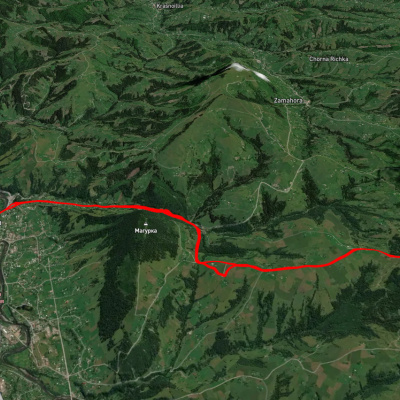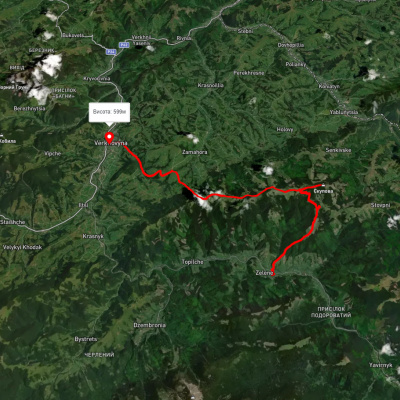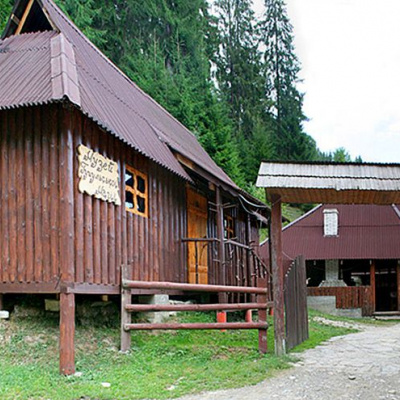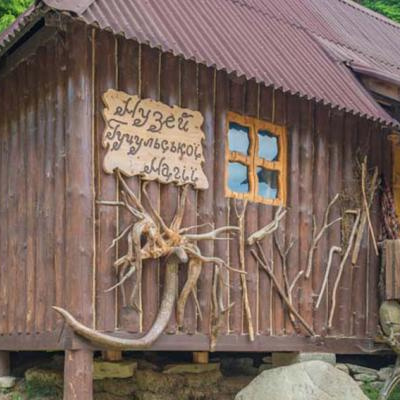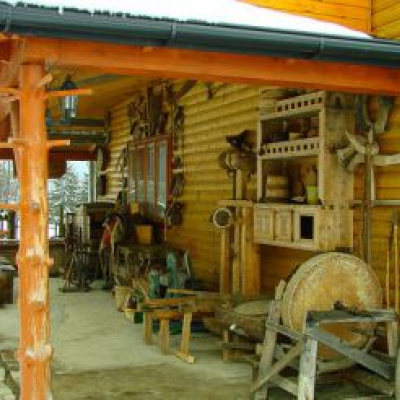Museum of Hutsul magic, Verkhovyna
Hutsul magic has nothing to do with witchcraft in Central Ukraine. Its techniques are believed to be rooted in Roman culture. Hutsuls have no witches or devils with their attributes. The main tools of molfars are a viper's stick, a thunder heron, and a hornet's cross.
In Verkhovyna, in a small wooden hut, there are many attributes of the Carpathian medicine men, as well as medicinal herbs and infusions that they used to heal people. A table with the belongings of the last Carpathian molfar Mykhailo Nechai from the village of Verkhnii Yaseniv occupies an honorable place in the exhibition.
In the summer of 2015, a museum of Hutsul magic was opened in Vorokhta, Ivano-Frankivsk region. It looks like a typical ethnographic hut with a lot of specific artifacts - sticks, knives, jars of incomprehensible potions. It is only from the guide's story that it becomes clear what these objects actually mean: in the hands of an experienced molfar, a knife can disperse clouds, and a staff can reconcile quarreling spouses.
Visitors will also learn about the magic literally "sewn" into Hutsul clothes, and about the patterns on rings, a traditional piece of jewelry worn by molfars. The museum will also tell you about ancient magic spells and traditional medicinal recipes of the highlanders. Medicine men knew where and when to collect medicinal herbs and roots. Once upon a time, infusions of them were the main medicines. However, the museum visitors are sure that such preparations should be used even now.
The museum also tells about the so-called "gaders" - people who could talk to snakes and heal them from their bites. They also used an alcoholic tincture from the Carpathian viper to treat cancer.
The museum offers master classes on making magical artifacts, such as special wooden spoons, or on the ancient technique of secret correspondence, which was used to pass on secret knowledge from one generation of molfars to another.
Accommodation around Museum of Hutsul magic, Verkhovyna:
Nearby hiking trails near Museum of Hutsul magic, Verkhovyna:
Які маршрути проходять повз Museum of Hutsul magic, Verkhovyna?
Пропонуємо пройти такі туристичні (пішохідні) маршрути через/біля Museum of Hutsul magic, Verkhovyna: смт. Верховина – хр. Кринта-Скупова – смт. Верховина, смт. Верховина – г. Скупова, с. Зелене, через г. Скупова до смт. Верховина, смт. Верховина – хр. Кринта-Скупова, смт. Верховина, через г. Біла Кобила, г. Маковиця, Скелі Довбуша до м. Яремче, смт. Верховина, через г. Біла Кобила, г. Хорде до с. Татарів
